 |
 |
 |
 |
 |
 |
| |
 |
|
 |
 |
 |
  |
  |
 |
 |
 |
 |
| PREMIO PRITZKER 2009 | PETER ZUMTHOR
|
|
Citation from the Jury
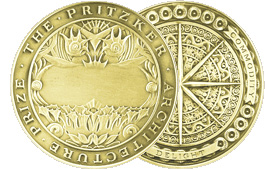 Peter Zumthor is a master architect admired by his colleagues around the world for work that is focused, uncompromising and exceptionally determined. He has conceived his method of practice almost as carefully as each of his projects. For 30 years, he has been based in the remote village of Haldenstein in the Swiss mountains, removed from the flurry of activity of the international architectural scene. There, together with a small team, he develops buildings of great integrity –untouched by fad or fashion. Declining a majority of the commissions that come his way, he only accepts a project if he feels a deep affinity for its program, and from the moment of commitment, his devotion is complete, overseeing the project’s realization to the very last detail. Peter Zumthor is a master architect admired by his colleagues around the world for work that is focused, uncompromising and exceptionally determined. He has conceived his method of practice almost as carefully as each of his projects. For 30 years, he has been based in the remote village of Haldenstein in the Swiss mountains, removed from the flurry of activity of the international architectural scene. There, together with a small team, he develops buildings of great integrity –untouched by fad or fashion. Declining a majority of the commissions that come his way, he only accepts a project if he feels a deep affinity for its program, and from the moment of commitment, his devotion is complete, overseeing the project’s realization to the very last detail.
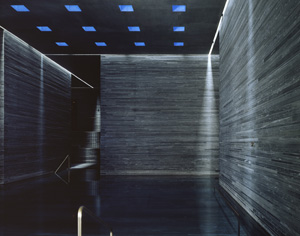 His buildings have a commanding presence, yet they prove the power of judicious intervention, showing us again and again that modesty in approach and boldness in overall result are not mutually exclusive. Humility resides alongside strength. While some have called his architecture quiet, his buildings masterfully assert their presence, engaging many of our senses, not just our sight but also our senses of touch, hearing and smell. His buildings have a commanding presence, yet they prove the power of judicious intervention, showing us again and again that modesty in approach and boldness in overall result are not mutually exclusive. Humility resides alongside strength. While some have called his architecture quiet, his buildings masterfully assert their presence, engaging many of our senses, not just our sight but also our senses of touch, hearing and smell.
Zumthor has a keen ability to create places that are much more than a single building. His architecture expresses respect for the primacy of the site, the legacy of a local culture and the invaluable lessons of architectural history. The Kolumba Museum in Cologne, for example, is not only a startling contemporary work but also one that is completely at ease with its many layers of history. Here, Zumthor has produced a building that emerges from the remains of a bombed church in the most inevitable and lyrical of ways, intertwining place and memory in an entirely new palimpsest. This has always been the compelling character of this architect’s work, from the singular yet universal breath of faith inscribed in the tiny field chapel in the village of Wachendorf, Germany, to the mineral mist in the thermal baths at Vals, Switzerland. For him, the role of the architect is not just to construct a fixed object but also to anticipate and choreograph the experience of moving through and around a building.
In Zumthor’s skillful hands, like those of the consummate craftsman, materials from cedar shingles to sandblasted glass are used in a way that celebrates their own unique qualities, all in the service of an architecture of permanence. The same penetrating vision and subtle poetry are evident in his writings as well, which, like his portfolio of buildings, have inspired generations of students. In paring down architecture to its barest yet most sumptuous essentials, he has reaffirmed architecture’s indispensable place in a fragile world. For all of these reasons, Peter Zumthor is the recipient of the 2009 Pritzker Architecture Prize.
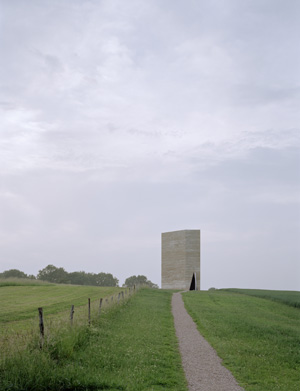 L'architetto svizzero Peter Zumthor è stato scelto come vincitore del Premio di Architettura Pritzker 2009. La cerimonia ufficiale per quello che viene riconosciuto in tutto il mondo come il più alto riconoscimento nel campo dell'architettura si terrà il 29 maggio a Buenos Aires, in Argentina. Nell'occasione verranno consegnati al 65enne architetto una medaglia in bronzo ed il premio di 100.000 dollari. L'architetto svizzero Peter Zumthor è stato scelto come vincitore del Premio di Architettura Pritzker 2009. La cerimonia ufficiale per quello che viene riconosciuto in tutto il mondo come il più alto riconoscimento nel campo dell'architettura si terrà il 29 maggio a Buenos Aires, in Argentina. Nell'occasione verranno consegnati al 65enne architetto una medaglia in bronzo ed il premio di 100.000 dollari.
Anche se la maggior parte del suo lavoro è in Svizzera, Zumthor ha progettato edifici in Germania, Austria, Paesi Bassi, Inghilterra, Spagna, Norvegia, Finlandia e Stati Uniti. La sua opera più famosa sono le Terme di Vals, in Svizzera, che viene considerata dalla stampa "il suo capolavoro". Più recentemente la critica ha elogiato la Cappella di St. Niklaus von Flüe (Bruder Klaus), vicino a Colonia, in Germania. La giuria non ha individuato solo questi edifici, ma anche il Museo Kolumba a Colonia, indicando quest'ultimo come "un'opera che, al tempo stesso, è sorprendentemente contemporanea, ma anche completamente a proprio agio con diverse stratificazioni storiche.". Annunciando la scelta della giuria, Thomas J. Pritzker, presidente della Fondazione Hyatt ha espresso questa motivazione: "Peter Zumthor è un maestro ammirato dai suoi colleghi di tutto il mondo per come riesce a mettere a fuoco il suo lavoro, senza scendere a compromessi e con una fortissima determinazione". Ha quindi aggiunto: "Tutti gli edifici di Peter Zumthor hanno una presenza forte, senza tempo. Egli ha la rara capacità di combinare un pensiero chiaro e rigoroso con una vera e propria dimensione poetica, ed il risultato di ciò si esprime in opere che non smettono mai di ispirare".
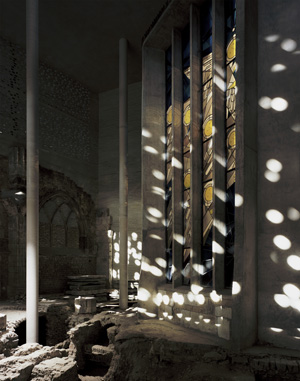 Nel suo libro "Pensare architettura", Zumthor si è espresso con queste parole: "Credo che oggi l'architettura debba ricordarsi dei compiti e delle possibilità che le sono specificatamente propri. L'architettura non è un veicolo o un simbolo per cose estranee al proprio essere. In una società che celebra il superfluo, l'architettura può, nel proprio ambito, opporre resistenza, ribellarsi alla dissipazione gratuita di forme e significati e parlare il proprio linguaggio. Nel suo libro "Pensare architettura", Zumthor si è espresso con queste parole: "Credo che oggi l'architettura debba ricordarsi dei compiti e delle possibilità che le sono specificatamente propri. L'architettura non è un veicolo o un simbolo per cose estranee al proprio essere. In una società che celebra il superfluo, l'architettura può, nel proprio ambito, opporre resistenza, ribellarsi alla dissipazione gratuita di forme e significati e parlare il proprio linguaggio.
Il linguaggio dell'architettura non è, ai miei occhi, una domanda relativa a un determinato stile. Ogni casa è costruita per un determinato scopo, in un determinato luogo e per una determinata società. Con i miei progetti cerco di rispondere alle domande risultanti da queste semplici circostanze nel modo più preciso e critico che mi sia possibile. In un'epoca in cui la cultura della creazione è avvilita e la bellezza è arbitraria, io miro all'efficacia chiarificatrice di questo lavoro."
Lord Palumbo, presidente della giuria del Premio Pritzker, si è così espresso: "Zumthor ha la grande capacità di creare dei luoghi che sono molto di più di un singolo edificio. La sua architettura esprime rispetto per l'ambiente nel quale si inserisce, raccoglie l'eredità della cultura locale e la preziosa lezione della storia." Ha quindi aggiunto: "nelle abili mani di Zumthor, come in quelle di un consumato artigiano, materiali come le scandole di cedro o il vetro sabbiato vengono utilizzate in maniera da esaltare le loro qualità peculiari, il tutto al servizio di un'architettrua che rimanga."
Zumthor, dopo essere venuto a conoscenza dell'assegnazione del premio 2009, ha commentato: "Essere il vincitore del Premio Pritzker è un meraviglioso riconoscimento al lavoro ed all'architettura che abbiamo espresso in questi ultimi 20 anni. Che un gruppo di lavoro piccolo come il nostro ottenga questo riconoscimento nel mondo professionale ci fa sentire orgogliosi, e deve essere di incoraggiamento per i giovani professionisti che, se puntano sulla qualità del loro lavoro possono acquisire visibilità senza ricorrere a forme speciali di promozione."
Con l'assegnazione a Peter Zumthor è la seconda volta in tre decenni che il premio viene assegnato ad architetti svizzeri. Nel 2001 vennero infatti premiati Jacques Herzog e Pierre de Meuron.
Lo scopo del Premio di Architettura Pritzker è quello di premiare, ogni anno, un architetto vivente le cui opere mostrano una combinazione di talento, visione ed impegno tali da produrre un contributo significativo per l'umanità e per l'ambiente, espresso attraverso l'arte dell'architettura.
La giuria selezionata che ha scelto Zumthor come vincitore del Premio 2009 era composta dal suo Presidente, Lord Palumbo, internazionalmente conosciuto come mecenate dell'architettura di Londra, presidente di fondazioni, Serpentine Gallery, ex presidente del Consiglio delle Arti della Gran Bretagna, ex presidente della Tate Gallery Foundation, ex fiduciario dell'Archivio Mies van der Rohe al Museum of Modern Art, e, in ordine alfabetico: Alejandro Aravena, architetto e direttore esecutivo di Elemental, Santiago del Cile; Shigeru Ban, architetto e professore alla Keio University, Tokyo, Giappone; Rolf Fehlbaum, presidente del consiglio d'amministrazione della Vitra, Basilea, Svizzera; Carlos Jimenez, professore, Rice University School of Architecture, responsabile del Carlos Jimenez Studio a Houston, Texas; Juhani Pallasmaa, architetto, professore ed autore di Helsinki, Finlandia; Renzo Piano, architetto e vincitore del Premio pritzker, con studi a Parigi, Francia e Genova, Italia; e Karen Stein scrittore, curatore e consulente di architettura in New York. Martha Thorne, decano associato per le relazioni esterne, IE Scuola di Architettura di Madrid, Spagna, è il direttore esecutivo.
"Ci sono stati due vincitori del Premio Pritzker provenienti dall'America del Sud, ma non avevamo mai svolto la cerimonia di premiazione in quel continente", ha spiegato Pritzker. "Il primo fu Oscar Niemeyer, brasiliano, nel 1988, e quindi un altro brasiliano nel 2006, Paulo Mendes da Rocha. Abbiamo tenuto le loro cerimonie di consegna rispettivamente a Chicago e Istanbul. La sede cambia ogni anno, si sposta in tutto il mondo incentrandosi su posti di rilevo storico/architettonico. Abbiamo tenuto la cerimonia in Asia, Europa, America del Nord, Messico incluso, ed è quindi ora di visitare anche l'America del Sud."
Philip Johnson fu il primo vincitore del Pritzker nel 1979. Luis Barragán, Messico, fu premiato nel 1980. Il britannico James Stirling fu premiato nel 1981, Kevin Roche nel 1982, Ieoh Ming Pei nel 1983, e Richard Meier nel 1984. Hans Hollein, Austria, vinse nel 1985. Il tedesco Gottfried Böhm ha ricevuto il premio nel 1986. Kenzo Tange fu il primo architetto giapponese a ricevere il premio nel 1987, Fumihiko Maki fu il secondo giapponese nel 1993 e Tadao Ando fu il terzo nel 1995. Robert Venturi ha ricevuto il premio nel 1991, ed il portoghese Alvaro Siza nel 1992. Christian de Portzampar, Francia vinse il premio Pritzker nel 1994. L'americano Gordon Bunshaft ed il brasiliano Oscar Niemeyer furono premiati nel 1988. Frank Gehry, Stati Uniti, fu premiato nel 1989, Aldo Rossi, Italia, nel 1990. Nel 1996 fu premiato lo spagnolo Rafael Moneo; nel 1997, Sverre Fehn, Norvegia; nel 1998 Renzo Piano, Italia, nel 1999 Sir Norman Foster, Gran Bretagna , e nel 2000, Rem Koolhaas, Paesi Bassi. Nel 2001 il premio è stato assegnato a due architetti svizzeri: Jacques Herzog e Pierre de Meuron. L'australiano Glenn Murcutt ha ricevuto il premio nel 2002. Il danese Jørn Utzon fu premiato nel 2003; Zaha Hadid, Gran Bretagna, nel 2004 e Thom Mayne, Stati Uniti, nel 2005. Paulo Mendes da Roch, Brasile, fu premiato nel 2006, e Richard Rogers ha ricevuto il premio nel 2007. Jean Nouvel, Francia, fu premiato lo scorso anno.
Il campo dell'architettura è stato scelto dalla famiglia Pritzker per il loro interesse nel settore delle costruzioni dovuto alla gestione degli Hyatt Hotels in tutto il mondo, ed anche perché l'architettura è un settore creativo non incluso fra i premi Nobel. Le procedure furono modellate proprio sull'esempio del Nobel, con la selezione finale effettuata dalla giuria internazionale dopo deliberazioni e votazioni segrete. Le candidature continuano di anno in anno con centinaia di candidati da paesi di tutto il mondo.
The Jury
ChairMan
The Lord Palumbo
Architectural Patron, Chairman of the Trustees, Serpentine Gallery
Former Chairman of the Arts Council of Great Britain
Former Chairman of the Tate Gallery Foundation
Former Trustee of the Mies van der Rohe Archive at the Museum of Modern Art, New York
London, England
Alejandro Aravena
Architect and Executive Director of Elemental
Santiago, Chile
Shigeru Ban
Architect
Professor, Keio University
Tokyo, Japan
Rolf Fehlbaum
Chairman of the Board, Vitra
Basel, Switzerland
Carlos Jimenez
Professor, Rice University School of Architecture
Principal, Carlos Jimenez Studio
Houston, Texas
Juhani Pallasmaa
Architect, Professor and Author
Helsinki, Finland
Renzo Piano
Architect and Pritzker Laureate 1998
Paris, France and Genoa, Italy
Karen Stein
Writer, editor and architectural consultant
New York, New York
Executive Director
Martha Thorne
Associate Dean for External Relations
IE School of Architecture
Madrid, Spain
about Peter Zumthor...
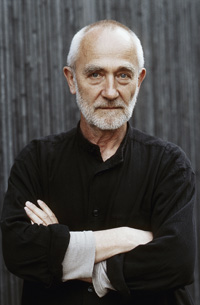 Peter Zumthor was born on April 26, 1943, the son of a cabinet maker, Oscar Zumthor, in Basel, Switzerland. He trained as a cabinet maker from 1958 to 1962. From 1963-67, he studied at the Kunstgewerbeschule, Vorkurs and Fachklasse with further studies in design at Pratt Institute in New York. Peter Zumthor was born on April 26, 1943, the son of a cabinet maker, Oscar Zumthor, in Basel, Switzerland. He trained as a cabinet maker from 1958 to 1962. From 1963-67, he studied at the Kunstgewerbeschule, Vorkurs and Fachklasse with further studies in design at Pratt Institute in New York.
In 1967, he was employed by the Canton of Graubünden (Switzerland) in the Department for the Preservation of Monuments working as a building and planning consultant and architectural analyst of historical villages, in addition to realizing some restorations. He established his own practice in 1979 in Haldenstein, Switzerland where he still works with a small staff of fifteen. Zumthor is married to Annalisa Zumthor-Cuorad. They have three children, all adults, Anna Katharina, Peter Conradin, and Jon Paulin, and two grandchildren.
Since 1996, he has been a professor at the Academy of Architecture, Universitá della Svizzera Italiana, Mendrisio. He has also been a visiting professor at the University of Southern California Institute of Architecture and SCI-ARC in Los Angeles in 1988; at the Technische Universität, Munich in 1989; and at the Graduate School of Design, Harvard University in 1999.
His many awards include the Praemium Imperiale from the Japan Art Association in 2008 as well as the Carlsberg Architecture Prize in Denmark in 1998, and the Mies van der Rohe Award for European Architecture in 1999. In 2006, he received the Thomas Jefferson Foundation Medal in Architecture from the University of Virginia. The American Academy of Arts and Letters bestowed the Arnold W. Brunner Memorial Prize in Architecture in 2008. A complete list of all his awards is provided in the fact summary of this media kit.
In the recent book published by Barrons Educational Series, Inc. titled, Architectura, Elements of Architectural Style, with the distinguished architectural historian from Australia, Professor Miles Lewis, as general editor, the Zumthor’s Thermal Bath building at Vals is described as “a superb example of simple detailing that is used to create highly atmospheric spaces. The design contrasts cool, gray stone walls with the warmth of bronze railings, and light and water are employed to sculpt the spaces. The horizontal joints of the stonework mimic the horizontal lines of the water, and there is a subtle change in the texture of the stone at the waterline. Skylights inserted into narrow slots in the ceiling create a dramatic line of light that accentuates the fluidity of the water. Every detail of the building thus reinforces the importance of the bath on a variety of levels.”
8 In the book titled Thinking Architecture, first published by Birkhauser in 1998, Zumthor set down in his own words a philosophy of architecture. One sample of his thoughts is as follows: “I believe that architecture today needs to reflect on the tasks and possibilities which are inherently its own. Architecture is not a vehicle or a symbol for things that do not belong to its essence. In a society that celebrates the inessential, architecture can put up a resistance, counteract the waste of forms and meanings, and speak its own language. I believe that the language of architecture is not a question of a specific style. Every building is built for a specific use in a specific place and for a specific society. My buildings try to answer the questions that emerge from these simple facts as precisely and critically as they can.”
Credits
Photo of the Therme Vals and Kolumba Museum, © Helene Binet, courtesy by Peter Zumthor
Photo of the Field Chapel to Saint Nikolaus von der Flüe, © Walter Mair, courtesy by Peter Zumthor
Photo of Peter Zumthor, © Gary Ebner, courtesy by Peter Zumthor

Pritzker Prize |
|
 |
  |
 |
|
|